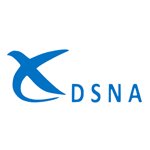The Extended ATC Planner (EAP): a new role to manage traffic complexity and improve flight efficiency

Within the SESAR dynamic Demand and Capacity Balancing (dDCB) concept, partners are refining the role and responsibilities of the controller team organization. This concept is paving the way to the SESAR vision of flow centric operations. Various approaches are on study such as the "Multi Sector Planning" and the "Extended Air Traffic Control Planner (EAP)".
The EAP, DSNA’s vision, introduces a new role contributing to bridge the gap between Air Traffic Flow and Capacity Management (ATFCM) and Air Traffic Control (ATC). This concept has been developed thanks to Reims UAC and the Technical and Innovation Directorate (DTI) expertise. A live trial took place in Reims UAC from 16th to 21st June 2015 to evaluate the role and new ATFCM tools of the EAP.
When traffic is both high and complex, classic ATFCM/ATC procedures are not efficient enough because to solve ATFCM hotspots needs real-time and fine-tune measures. To address the situation, DSNA has developed Dynamic-ATFCM in its day to day operations, a new concept to manage traffic complexity and to streamline controller’s workload. One of the pillars is based on the Extended ATC Planner. This new function aims at providing real time and fine tune measures to solve ATFCM hotspots, and to perform early complexity alleviation measures closest to ATC activities:
- to support the Local Traffic Manager by identifying ATFCM hotspots and propose options to clear them
- to identify Short Term ATFCM Measures (STAM) candidates
- to coordinate and monitor STAM implementation by ATC sectors
The live trial has evaluated a complete EAP and Control Working Position. Delphine, an air traffic controller at Reims UAC, said: “The first feedback is very positive and promising. ATFCM experts and ATCOs on the job are welcoming the supporting tool that is ensuring a complete information and coordination process as well as providing ATC sectors with a better situational awareness of the ongoing ATFCM situation”.
Next steps for DSNA are to improve the complexity assessment and resolution thanks to the support of ENAC, the French civil aviation Academy, to continue refining the EAP concept in a Free Route context and to start deployment into operation at Reims UAC early 2016.




.jpg)



.png)
Comments
There are no comments yet for this item
Join the discussion